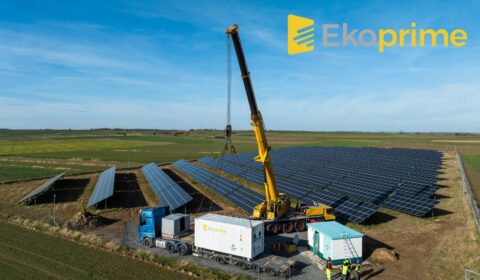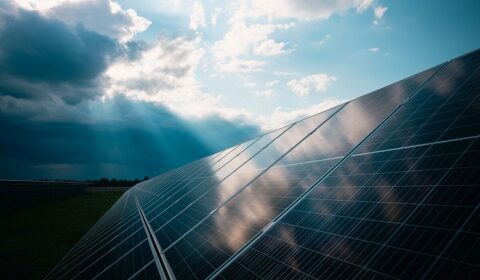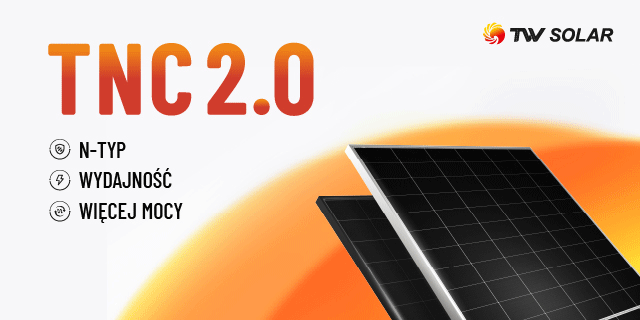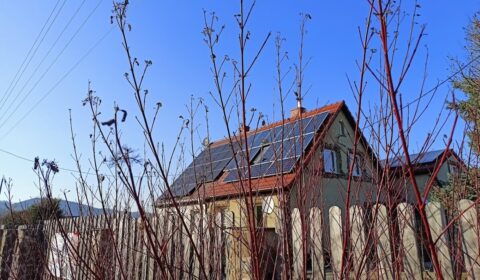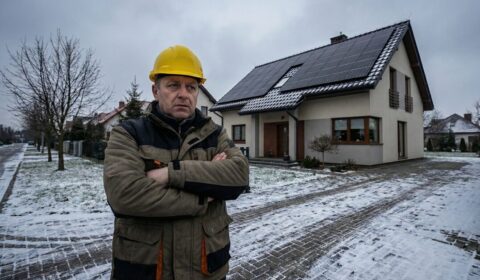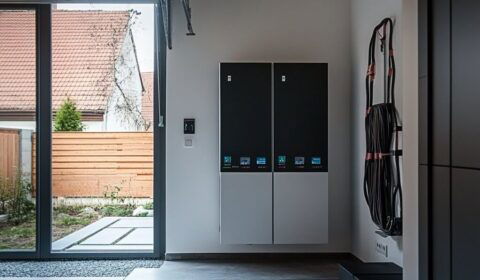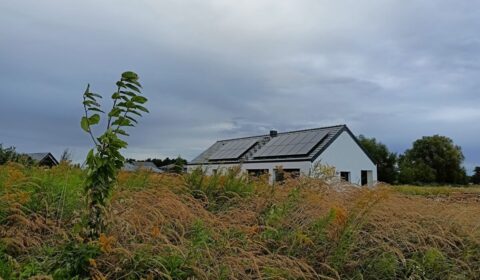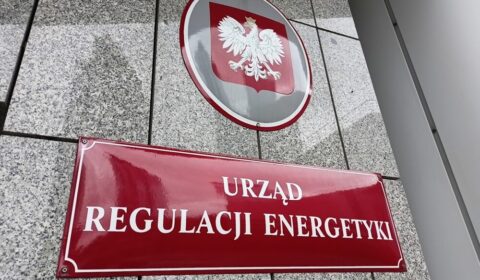Bałtyk offshore
It has been 24 years since Denmark installed the first ever offshore wind farm, the 5MW Vindeby, off the island of Lolland, in the Baltic Sea region.
Since then, the global focus for the industry has shifted to the nearby North Sea, and comparatively few projects have been installed in the Baltic, despite the advantages it has over its choppier neighbour.
But this vast, untapped potential looks ready to be tapped, with more than 16GW of Baltic projects in the pipeline, from Germany to Arctic Finland, taking in countries new to the technology, such as Poland, Lithuania and Estonia.
One significant advantage of the Baltic is that it is an almost closed sea, similar to a large inland lake.
“The wave height is considerably lower than in the North Sea, while wind is comparable to North Sea locations,” says Thanos Kouremenos, construction director for Iberdrola’s 350MW Wikinger wind park off Germany’s Baltic coast, where preliminary construction work has just begun.
Lower waves should have an impact on installation costs, Hans Ohlsson, managing director for Sweden at WPD Offshore, said during the recent Windforce Baltic Sea conference in Helsinki. At the developer’s 265MW Storgrundet project off Sweden, waves were found to be less than 1.5 metres high for 90% of the time. In the North Sea, where waves of more than two metres are expected 20% of the time, rough weather can often put a halt to offshore construction.
Tides are also less pronounced in the Baltic, and many consented offshore projects are far closer to the coast and can count on good port infrastructure, potentially making construction, grid connection and operation cheaper.
Ohlsson also points to lower saline levels that make foundations and turbines less prone to corrosion and could prolong their operating life.
But nature and the climate also pose challenges in the Baltic, including ice and an uneven seabed. In contrast to the North Sea with its mostly sandy floor, the subsea surface in the Baltic varies. Within the same project location might be found sandy stretches, rocky areas and chalky ground.
“Random boulders exist all over the place,” Kouremenos says. And while an extended scanning of the seabed can reveal the surface boulder, it can’t always show those hiding under the seabed.
He adds: “Models for estimations fail to predict exactly the behaviour of chalk as a material.”
But the greatest obstacle to offshore wind in the Baltic is man-made. Insufficient support systems in most Baltic Sea countries, besides Germany and Denmark, mean it is very hard to build a profitable offshore project.
“More countries in the region need to develop stable long-term frameworks to develop that [offshore wind] potential beyond the current 1,142.5MW installed,” says Justin Wilkes, deputy chief executive of the European Wind Energy Association.
Germany
After a slow start, Germany is the only country in the Baltic Sea area with projects currently under construction. Utility EnBW, owned by the Green Party-led state of Baden-Württemberg, is in full swing building the 288MW Baltic 2 near the island of Rügen. The project, which is 49.89% owned by Australia’s Macquarie Capital, is slated to be commissioned this spring, boosting Germany’s cumulative Baltic operating capacity to 339MW.
Baltic 2 is in German waters close to Denmark’s 600MW Kriegers Flak and Sweden’s 640MW Kriegers Flak 2. All three were originally planned to be grid-connected to all three countries, but cost-cutting and uncertainty about the Swedish project ever being built have put that idea on ice.
Iberdrola has just started preliminary construction work at its 350MW Wikinger project — which has wind speed averages of just under ten metres per second — with the erection of 70 Areva 5MW M5000-135 machines planned for 2017.
E.ON could be next in line with the construction of its 385MW Arkona Becken Südost project adjacent to Wikinger.
The utility is in final negotiations with a turbine supplier and plans to take a final investment decision on the project this summer, E.ON Climate & Renewables boss Eckhardt Rümmler tells Recharge.
There are more than a dozen other offshore wind projects off Germany’s Baltic coast going through the licensing process, but it is far from clear how many of them have a realistic chance of being built.
Last year, the government extended the country’s support for offshore wind until the end of this decade, but also limited the total capacity to 6.5GW by 2020, and 15GW by 2030 (down from the previously planned 15GW and 25GW respectively).
Denmark
The offshore pioneer now has close to 900MW operating capacity in the Baltic Sea region, including the 400MW Anholt project that Dong Energy completed in 2013, the Baltic’s largest.
More is planned. Denmark — which has a stable feed-in tariff and bidding system — hopes to more than double its offshore wind capacity by adding another 1.5GW off its Baltic and North Sea coasts. It is not yet clear which projects will eventually take off, but preparations for the 400MW Horns Rev 3 project in the North Sea and the 600MW Kriegers Flak in the Baltic are advanced. Tenders are planned to be completed at the end of this year, with Kriegers Flak slated to be operational in late 2021.
But Denmark is not as stable as it used to be, says Morten Basse Jensen, chief executive at industry body Offshoreenergy.dk.
“We don’t know what will happen after September,” he says, pointing to parliamentary elections that month that the opposition liberal-conservative parties — which are ahead in the polls — could win.
“We might have a stable situation until 2020. But there is some uncertainty, particularly with Kriegers Flak,” Basse Jensen adds, as some in the liberal-conservative bloc are opposed to the project due to its cost.
Sweden
In terms of operating offshore capacity, Sweden ranks third behind its southern neighbours, with 212MW of turbines turning in its waters. Of those, 30MW come from Europe’s only offshore farm in inland waters, in the large Vänern lake, for which a 23MW extension is planned.
But support from the country’s green certificate system is far too low for new offshore projects. Nevertheless, 2.4GW of projects already have their permits, while applications have been filed for another 3.5GW, and a further 750MW are in the planning stage.
Among the licensed projects is WPD’s 265MW Storgrundet some 15km off Sweden’s northern coast in the Bay of Bothnia.
“We have everything ready,” says Ohlsson. “If we had the right signals, so we can get finance, we could start everything very rapidly.”
There is hope.
Sweden’s Socialist-Green minority government plans to set up a support system just for offshore wind. That would also favour state-owned utility Vattenfall, which has vast expertise in the sector and owns several project licences, including Kriegers Flak 2.
Despite a determination by the minority government to get offshore wind off the ground, there are doubts how fast this could happen. Sweden’s energy agency has been tasked with coming up with a support scheme outside the green certificate system by June. But it could be another half year before an actual law proposal is on the table that could then be voted in parliament in 2016, Matthias Rapp, head of the Swedish Forum for Offshore Wind, tells Recharge.
To get the support scheme through parliament, the minority administration in Stockholm would need the support of at least the Left Party and the greenish-leaning Centre Party, which were part of the previous centre-right government.
Finland
Despite an ambitious 38% renewable-energy target for 2020, Finland has a similar problem of insufficient support.
WPD says it holds the country’s only licence for a large offshore wind project, the 400MWSuurhiekka wind park in the northern Gulf of Bothnia. But the project is on hold as a feed-in tariff of about €83.50 ($95) per MWh is deemed too low for current offshore construction costs.
Anni Mikkonen, managing director at the Finnish Wind Power Association (FWPA), says there are plans for 17 projects with a cumulative capacity of 2.3GW, most in northern Finland and close to the shore.
“There are plenty of places where you could construct offshore wind farms with quite modest costs,” Mikkonen says. “But a new support mechanism needs to be designed.”
Political discussions have a strong emphasis on the cost of wind power and widespread concerns about noise from turbines.
The FWPA is pinning its hopes on the success of a 30-50MW pilot wind farm that developer Suomen Hyötytuuli expects to bring on line by late 2016 near a current pilot 2.3MW turbine off the port of Tahkoluoto in the Gulf of Bothnia. The developer has put aside €110m for the project and plans to take a final investment decision on it in April, with construction planned to start in the summer of 2016.
Estonia, Latvia and Lithuania
Despite good offshore potential and a strong desire to end their energy dependence on Russia, the three Baltic states are among the poorest within the EU, so setting up a working support scheme may prove difficult for years to come. Also, its connection to other Nord Pool electricity markets with their relatively low prices undermines the competitiveness of offshore wind.
However, in Estonia, four projects are being considered, including developer 4 Energia’s 700MW project north of the island of Hiiumaa, which is about to complete its environmental impact studies.
Tuuliki Kasonen from the Estonian wind-power association says once costs come down further, Estonia could actually build offshore wind farms not for itself, but for other EU countries that wish to reach their 2020 renewables targets (Estonia met its own in 2012) as part of a co-operation mechanism foreseen in the EU’s Renewable Energy Directive.
Lithuania wants to allocate plots for offshore development via a tender, but still hasn’t presented rules for auctions and there is little expectation of a viable support mechanism. An excess of generation capacity, mostly from fossil fuels, and a soon-to-be-completed grid connection to Sweden for cheap electricity via the Nord Pool market, make offshore wind unlikely for the foreseeable future.
Latvia’s plan for a 200MW offshore project called Baltic Wind Park has been put on hold due to a moratorium on additional renewables capacity. A new environment minister from the Green Party is expected to lift the moratorium, but it is too early to know whether this will also help offshore.
Poland
There are several offshore wind projects in development in Poland, but a new renewable-energy act due later this year is not expected to introduce support that would make them viable. Poland’s current green certificate system has favoured the cheapest technologies, and unfairly included co-firing with coal in some cases, which effectively pushed more expensive renewables technologies out of the picture, says Mariusz Witonski, president of the Polish offshore wind-energy society.





















